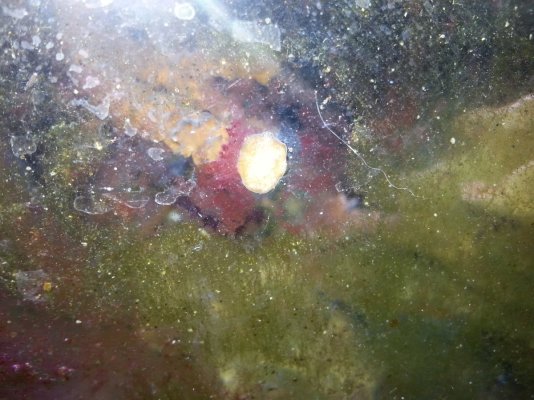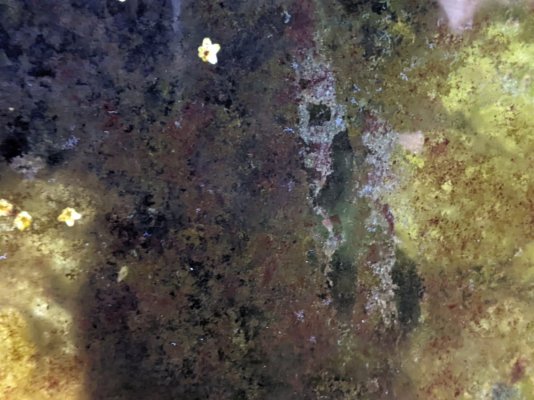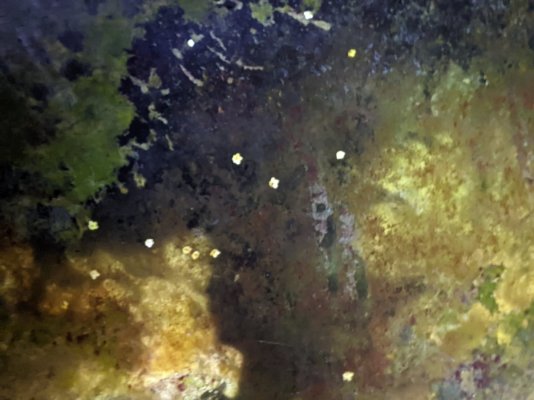- Joined
- Sep 21, 2018
- Messages
- 6,655
- Reaction score
- 7,142
This is just an interesting demonstration.
I placed 200 mL aquarium water in each of two identical plastic 0.25 L containers. In one container I placed a piece of clean aragonite rubble and in the other a piece of aragonite rubble that has been in my aquarium some months. The containers were illuminated 12 hours a day and aerated. After three days, the aquarium water was replaced with Instant Ocean with nitrate and phosphate at the same concentrations as the aquarium water. This medium was replaced every three days. After one week here are the results. Enjoy!


I placed 200 mL aquarium water in each of two identical plastic 0.25 L containers. In one container I placed a piece of clean aragonite rubble and in the other a piece of aragonite rubble that has been in my aquarium some months. The containers were illuminated 12 hours a day and aerated. After three days, the aquarium water was replaced with Instant Ocean with nitrate and phosphate at the same concentrations as the aquarium water. This medium was replaced every three days. After one week here are the results. Enjoy!






















